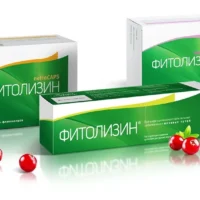Description
Spazmex (Trospium Chloride) Coated Tablets 15 mg. №30
Ingredients
Active ingredient: Trospium chloride 15 mg.
Other ingredients: lactose monohydrate, maize starch, povidone, talc, magnesium stearate, hypromellose, macrogol, titanium dioxide (E171), and iron oxide yellow (E172).
Dosage
Recommended dosage: The usual dose is one 15 mg tablet taken orally twice daily. Do not exceed the recommended dose without medical advice.
Indications
Spazmex (Trospium Chloride) Coated Tablets are indicated for the treatment of overactive bladder symptoms, including urinary incontinence, urgency, and frequency.
Contraindications
Do not use Spazmex (Trospium Chloride) Coated Tablets if you have a known hypersensitivity to trospium chloride or any of the other ingredients. Consult your healthcare provider before use if you have certain medical conditions.
Directions
Take Spazmex tablets exactly as prescribed by your doctor. Swallow the tablet whole with a full glass of water. Do not crush, chew, or break the tablet.
Scientific Evidence
Trospium chloride, the active ingredient in Spazmex tablets, is a competitive muscarinic receptor antagonist that exerts its pharmacological effects by inhibiting the action of acetylcholine on muscarinic receptors in the bladder. This results in decreased bladder smooth muscle contractions, reducing the symptoms of overactive bladder.
Additional Information
In clinical trials, trospium chloride has been shown to be effective in improving overactive bladder symptoms and quality of life in patients. A study published in the International Urogynecology Journal demonstrated the efficacy and safety of trospium chloride in the treatment of overactive bladder.
Trospium chloride has been found to have a favorable side effect profile compared to other antimuscarinic agents, with a lower incidence of dry mouth and constipation. It is well-tolerated and suitable for long-term use in the management of overactive bladder.
- Spazmex tablets contain 15 mg of trospium chloride.
- Do not take Spazmex if you have a known allergy to trospium chloride.
- Consult your doctor if you experience any side effects while taking Spazmex tablets.





